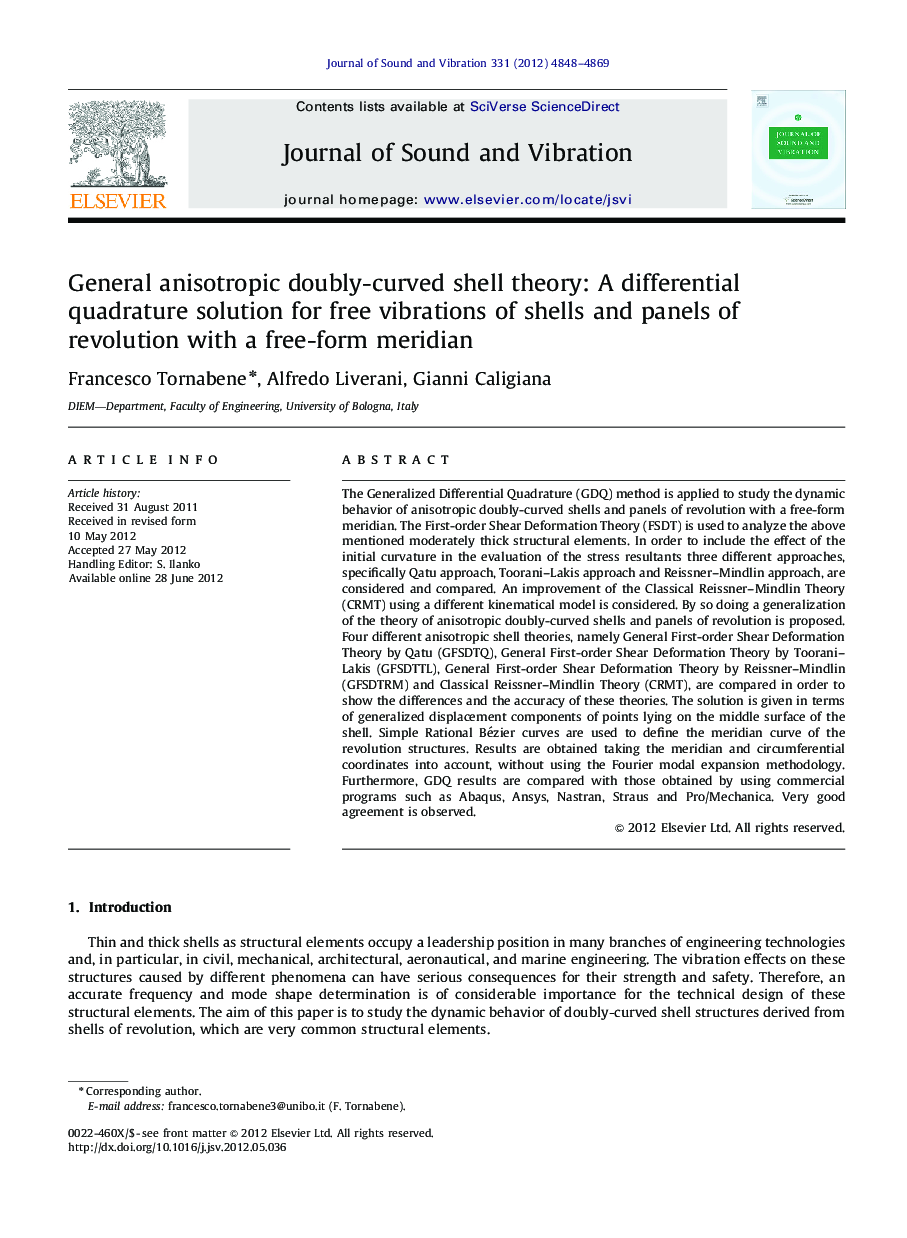| کد مقاله | کد نشریه | سال انتشار | مقاله انگلیسی | نسخه تمام متن |
|---|---|---|---|---|
| 288766 | 509643 | 2012 | 22 صفحه PDF | دانلود رایگان |

The Generalized Differential Quadrature (GDQ) method is applied to study the dynamic behavior of anisotropic doubly-curved shells and panels of revolution with a free-form meridian. The First-order Shear Deformation Theory (FSDT) is used to analyze the above mentioned moderately thick structural elements. In order to include the effect of the initial curvature in the evaluation of the stress resultants three different approaches, specifically Qatu approach, Toorani–Lakis approach and Reissner–Mindlin approach, are considered and compared. An improvement of the Classical Reissner–Mindlin Theory (CRMT) using a different kinematical model is considered. By so doing a generalization of the theory of anisotropic doubly-curved shells and panels of revolution is proposed. Four different anisotropic shell theories, namely General First-order Shear Deformation Theory by Qatu (GFSDTQ), General First-order Shear Deformation Theory by Toorani–Lakis (GFSDTTL), General First-order Shear Deformation Theory by Reissner–Mindlin (GFSDTRM) and Classical Reissner–Mindlin Theory (CRMT), are compared in order to show the differences and the accuracy of these theories. The solution is given in terms of generalized displacement components of points lying on the middle surface of the shell. Simple Rational Bézier curves are used to define the meridian curve of the revolution structures. Results are obtained taking the meridian and circumferential coordinates into account, without using the Fourier modal expansion methodology. Furthermore, GDQ results are compared with those obtained by using commercial programs such as Abaqus, Ansys, Nastran, Straus and Pro/Mechanica. Very good agreement is observed.
Journal: Journal of Sound and Vibration - Volume 331, Issue 22, 22 October 2012, Pages 4848–4869